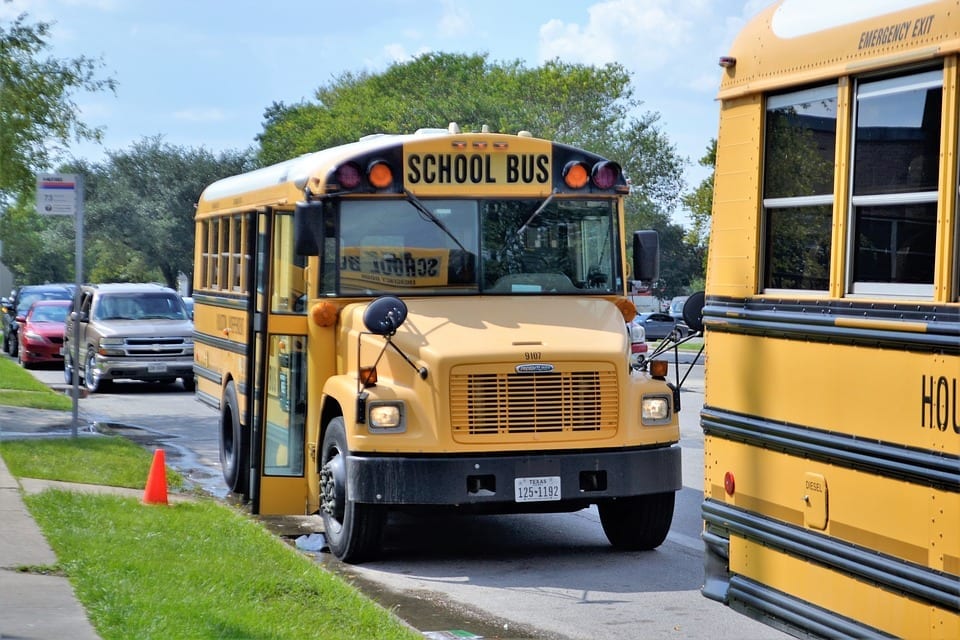Over 25 million children rely on buses each day for safe transport to and from school. With nearly half a million school buses on U.S. roads, it is one of the largest mass transit systems in the country.
Subsequently, school bus fleets are a costly expense to school districts, especially when older diesel models and inefficient practices hinder fuel economy savings and limit access to tax incentives. Even more troubling, diesel buses manufactured pre-2007 pose dangerous health risks to students and bus drivers because exposure to engine exhaust increases the likelihood of asthma, lung inflammation, heart problems and lung cancer.
Cleaning up school buses benefits both bottom lines and students’ health. The primary benefits school districts enjoy when they invest time and funds into clean school buses include:
- Cutting costs through government grants and tax incentives
- Fuel-economy savings
- Lessening wear and tear on school bus engines, and subsequently repair costs, by reducing idling
- Reducing schoolchildren’s and bus drivers’ exposure to harmful pollutants
- Improving air quality in your community
Cleaning up school bus fleets may seem like a daunting task, but there are turnkey, cost-effective solutions available.
Diesel buses manufactured pre-2007 pose dangerous health risks to students and bus drivers because exposure to engine exhaust increases the likelihood of asthma, lung inflammation, heart problems and lung cancer.
1. Replace emission-heavy school buses with clean school buses
Replacing old, dirty diesel vehicles with clean school buses is the most effective way to reduce harmful emissions.
Whether switching to a newer diesel model or obtaining buses that run on cleaner fuel, newer school buses can be more than 50 times cleaner than their older counterparts.
The diesel school buses manufactured today emit a significantly smaller amount of harmful pollutants and are more efficient, resulting in fuel-economy savings. Switching to a natural gas or propane fleet will save even more dollars as diesel prices steadily increase.
Of course, replacing vehicles can be costly for school districts, and it might not seem like the most viable route. However, there are grants and funding resources that can help overhaul the cost of clean school buses. Options vary from city to city, so check the local, regional and federal government for grant opportunities, contract bonuses and tax incentives.
2. Retrofit older school buses
If a school district has no room in their budget to purchase newer school buses, a cost-effective alternative is to purchase bolt-on parts that reduce emissions on older vehicles. For example, installing diesel particulate filters between the engine and exhaust pipe captures and stores exhaust soot to effectively decrease emissions.
School districts can also save thousands of dollars in fuel costs by encouraging their drivers to implement a no-idle policy.
Other examples of retrofit technology include diesel oxidation catalysts, flow-through filters and closed crankcase filtration systems. While implementing these devices won’t be as effective as replacing the bus, it will still significantly reduce schoolchildren’s exposure to harmful pollutants.
3. Implement a no-idle policy
An easy way to reduce exposure while eliminating wear and tear on the engine is to not leave school buses running idle. School districts can also save thousands of dollars in fuel costs by encouraging their drivers to implement a no-idle policy. Requiring drivers to turn off the engine while stopped for longer periods of time or while unloading is a straightforward solution that makes a big difference.
4. Evaluate bus routes
Reducing miles traveled each day is a simple, strategic fix to reducing emissions and saving on fuel. Taking time to re-evaluate the current school bus routes to ensure they’re efficient and well-organized is another low-cost way to clean up your school bus fleet. In addition to improving routes, school districts can also run newer buses on longer routes and use older buses for shorter distances, such as less frequent routes and field trips.



